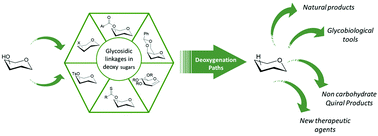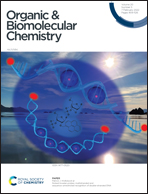Deoxy sugars. General methods for carbohydrate deoxygenation and glycosidation
Abstract
Deoxy sugars represent an important class of carbohydrates, present in a large number of biomolecules involved in multiple biological processes. In various antibiotics, antimicrobials, and therapeutic agents the presence of deoxygenated units has been recognized as responsible for biological roles, such as adhesion or great affinity to receptors, or improved efficacy. The characterization of glycosidases and glycosyltranferases requires substrates, inhibitors and analogous compounds. Deoxygenated sugars are useful for carrying out specific studies for these enzymes. Deoxy sugars, analogs of natural substrates, may behave as substrates or inhibitors, or may not interact with the enzyme. They are also important for glycodiversification studies of bioactive natural products and glycobiological processes, which could contribute to discovering new therapeutic agents with greater efficacy by modification or replacement of sugar units. Deoxygenation of carbohydrates is, thus, of great interest and numerous efforts have been dedicated to the development of methods for the reduction of sugar hydroxyl groups. Given that carbohydrates are the most important renewable chemicals and are more oxidized than fossil raw materials, it is also important to have methods to selectively remove oxygen from certain atoms of these renewable raw materials. The different methods for removal of OH groups of carbohydrates and representative or recent applications of them are presented in this chapter. Glycosidic bonds in general, and 2-deoxy glycosidic linkages, are included. It is not the scope of this survey to cover all reports for each specific technique.

- This article is part of the themed collections: Celebrating Latin American Chemistry and Chemical Biology in OBC


 Please wait while we load your content...
Please wait while we load your content...